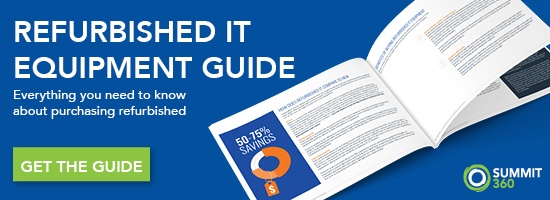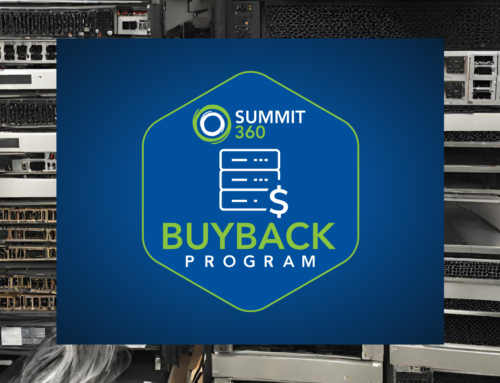We know end users can take their IT equipment for granted – it’s not something on their minds, and they rarely think about it. Unfortunately, some companies manage their IT equipment in the same way. They set it and forget it – hoping their equipment runs forever and placing themselves squarely in the path of a potential break/fix emergency.
Because manufacturers today produce such reliable equipment, it’s easy to see how that can happen. But you don’t need to drive your equipment into the ground or wait for a failure. Instead, proactively decide when to retire your IT assets by making it part of your ongoing asset planning.
Whether formal or informal, your plan should prompt you to regularly review what equipment you have, whether it’s meeting your business objectives, how well it’s performing and where it’s at in the life cycle. That way, you’re optimizing value and are never forced to make critical IT asset decisions reactively.
To help you get started, here are five signs it’s time to retire your IT assets.
You’ve received an end-of-life announcement
When manufacturers announce end of life, there’s a fair amount of time – years in some cases – between the announcement and when the company stops offering update patches (i.e., the true end of life).
Some companies – especially those with security as their primary concern – replace their IT assets at first notification. Other companies realize that while they could get a few more years out of these IT assets, they could also upgrade now and get something that lasts longer. So, they move quickly too.
In either scenario, the value of these assets – especially those widely used – can start decreasing soon after the end-of-life announcement. If you want to retire your IT assets and trade them in for newer options, do so before the market becomes flush with that asset.
Maintenance costs are increasing/becoming higher
When IT assets are new, support contracts are more affordable. But as those assets age, support costs go up as the likelihood of issues increases. This is especially true if you’re in a remote location where travel costs add to the total. The reason for these rising costs is simple: vendors know they’ll need to do more maintenance.
There are also potential costs to your business when equipment has downtime or failures.
If you’re at the point where your costs have started to increase substantially, it’s an excellent time to review whether your IT assets should be retired.
Related Reading: The Rising Cost of IT – 10 Ways to Help Reduce Your IT Costs
Your equipment is under-utilized – or not used at all
IT assets are costly. If your company owns equipment it’s not using – or is underutilizing – that equipment is not adding value. And the equipment itself is actually depreciating in value.
In these cases, it’s better to be proactive and consider trading in your equipment. That way, you can potentially benefit from any remaining value and use it to purchase new equipment that meets your needs.

New equipment is available that solves your problems
Manufacturers are continually releasing new technology upgrades. So, as your equipment begins to age, new equipment may better meet your business objectives (especially if you’re spending a lot of time and resources maintaining or trying to improve your network).
In some instances, you may be able to retire your IT assets and use the value toward new equipment that addresses your pain points.
In our experience, many companies don’t realize there’s still value in their used IT assets and it puts them in a better position to afford new equipment.
You already know what new equipment you need or want
If you have a reasonably mature IT department, you will probably pay close attention to your asset lifecycle. You plan ahead – maybe even have a good idea of what equipment you want next.
If you’re lucky enough to be in this position, talk with your IT asset vendor to find out what your current equipment is worth and whether it can help you afford the new equipment you need or want.
Having these conversations helps you determine the best time to retire your IT assets. If you do it too soon, you’ll lose some of the equipment’s value. If you wait too long, you’re losing the opportunity to leverage its remaining value toward an upgrade.
Related Reading: Do’s and Don’ts of Computer Disposal
The tipping point of value
Developing and executing long-term IT asset plans isn’t solely the domain of big companies with plenty of funding and well-staffed IT departments. Even if you’re a small to mid-size company without a CIO, you can benefit from taking a few proactive steps.
If you don’t have in-house resources, consider working with a partner who can learn your business, get familiar with your equipment and understand your needs. They can help you identify your equipment’s tipping point – the right time to retire your IT assets because they’ve been valuable to you and still have value in the used IT market.
Have more questions about when it’s time to retire your IT assets? Let’s connect.






